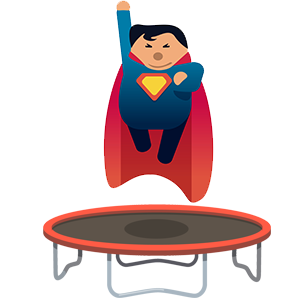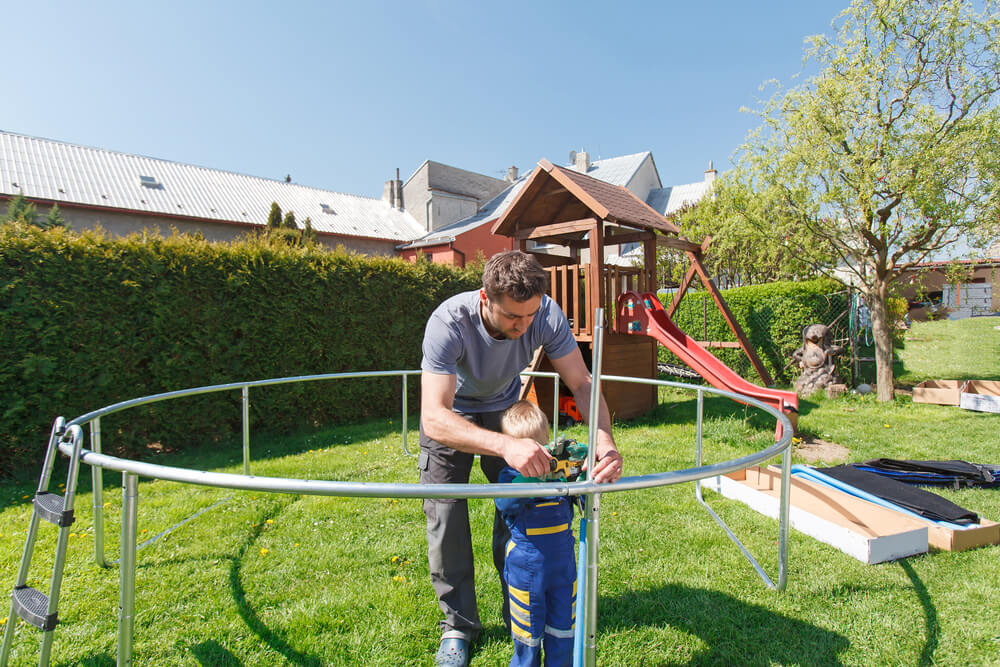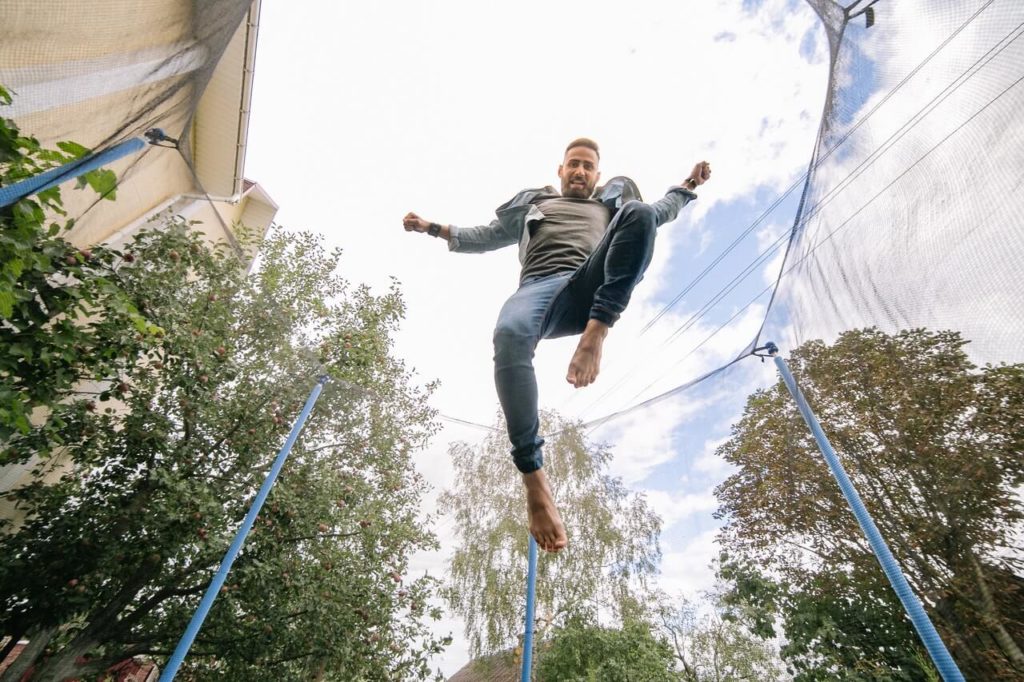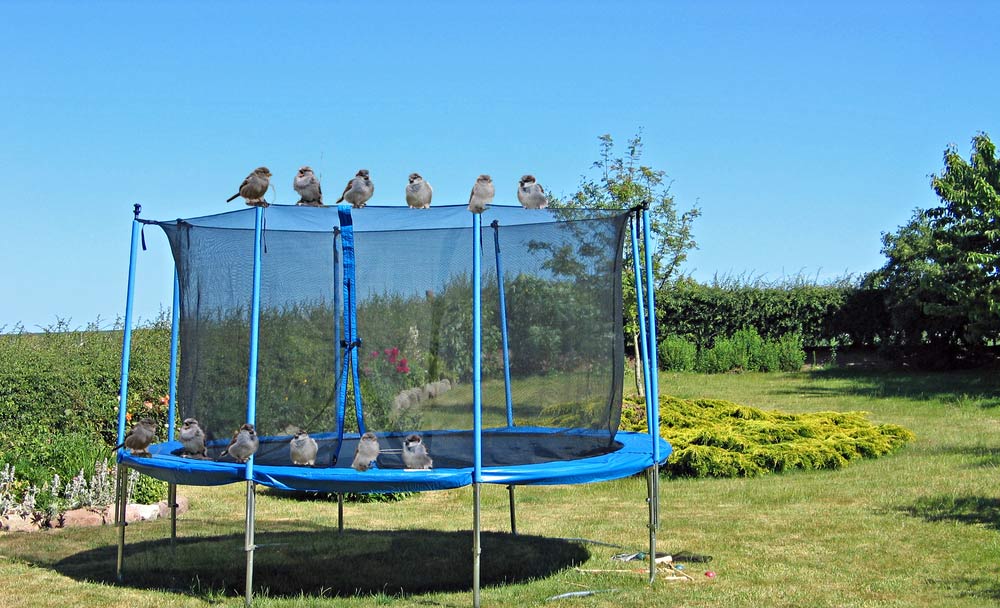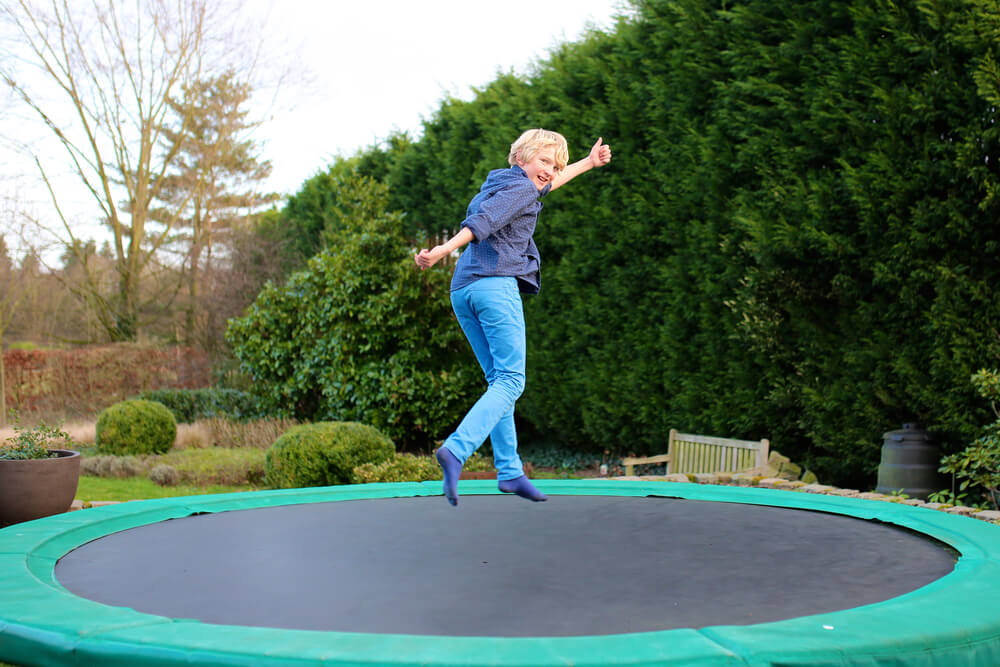Is your backyard full of slopes and uneven ground? That shouldn’t stop you from jumping on a rebounder. Follow these tips to safely install the trampoline on a slope.
We already know that trampolines work well when placed on flat surfaces.
Not only does a flat surface make the unit bouncier, but it also adds to the overall safety.
But not every space in our backyard is leveled flat.
So, can you still enjoy using a trampoline if all you have is a sloped yard?
Sure, you can.
Keep reading to discover how.
Setting up the Trampoline on a Slope
You can use different techniques to set the trampoline up, but regardless of the option you choose, you’ll need to do your best to ensure the trampoline is safe for use.
The approach you use to level an inclined surface depends majorly on how uneven the ground is.
Thus, it’s important to start by locating a surface that’s as even as possible to help reduce the time, money, and effort required to install a trampoline.
1. Find out How Steep the Slope Is
It’s not recommended to place a trampoline on surfaces that are too steep.
But how do you gauge the steepness to know whether to carry on with the installation or not?
Here’s a simple criterion to follow:
- Place the trampoline above the sloped area you’d like to install. This being a slope, you may need help to hold it.
- While holding the trampoline steadily, put a flat plank across the trampoline’s middle. To ensure the plank passes all the way across the unit, choose one that’s longer than the trampoline.
- On the trampoline’s down-slope side, put a carpenter’s level at the plank’s end.
- Now, lift the plank until the bubble falls between the two lines (the level reads even).
The aim is to find out how much slope needs correcting so you can use the trampoline and be safe doing so.
Big secret:
To know if the slope is safe for trampoline installation, you’ll need to divide the trampoline’s diameter (in inches) by the distance (in inches) you’d to raise the plank for it to read even.
If the result exceeds 7 inches, that slope is too steep; it’s best to move the trampoline to a different location.
But if the result falls between 4 and 7 inches, go ahead and level the trampoline using this method:
2. Dig a Trench on the Trampoline’s Up-Slope Side to Help Lower the Legs
This method is the least expensive.
Move the unit out of the way and create a trench at the section where the trampoline’s uphill legs will be placed.
The trench’s depth should be equal to the slope you just measured. Just to be sure it’s level, use the carpenter’s level.
Next, move the rebounder back to the original position, with its uphill legs within the trench.
You may notice the trampoline is slightly unstable as its side legs may be higher than downhill and uphill legs.
To fix this, dig trenches below the side legs until you ensure both downhill and uphill legs fit firmly.
Double-check that the trampoline is leveled in every direction, and make the necessary adjustments to the trenches.
How to Place a Trampoline on Uneven Ground
Sometimes, you may find yourself dealing with ground that doesn’t necessarily form a continuous slope, but it has curves and dips.
There are several easy ways to help you set up a rebounder on uneven ground.
3. Use Trampoline Leveling Blocks
This is another inexpensive and straightforward method to make the trampoline level.
All you need to do is put the blocks on the ground area that sinks the most and keep adding until the sinking part of the leg levels well with the other parts of the trampoline.
Important Things to keep in Mind When Using Leveling Blocks
- Blocks designed particularly for trampolines tend to work well. So, don’t go for bricks, landscaping stones, or cinder blocks.
- Not only are trampoline blocks inexpensive, but they also have unique features.
- They’re lightweight yet durable.
- They feature grooves to keep the trampoline legs from shifting.
- They’re stackable, which means you can work with more level variance and not worry about the stacked blocks sliding from each other.
Because finding trampoline leveling blocks can be challenging, we suggest you check out CAMCO Fasten XL 2×2.
4. Use a Trampoline Leveling Kit
A leveling kit isn’t as complicated as it might sound. Basically, you’re looking at a set of clamps to attach to the lower end of the trampoline legs.
How does it work?
The clamps feature adjustable feet that may retract and extend where necessary in a bid to make up for any difference in the surface level around the frame’s edges.
If you choose to go this route, we suggest that you get a kit consisting of high-quality materials like heavy-duty steel.
On top of that, if the ground has a wider level variance, you may want to use leveling blocks instead, as the feet on a leveling kit may not extend over a wider margin.
5. Cut the Trampoline Legs
While this may not be a great option, it might give you the desired results.
Cutting the rebounder’s legs makes it easy to adjust the legs to wherever you want.
But, before cutting the legs, keep the following in mind:
- That you’ve got no plans to move the trampoline again. After cutting the trampoline legs, you can’t undo it. The legs are gone, and so, if you want to relocate the trampoline, you may have to purchase a new one.
- To cut the legs, you need a tool that cuts through steel. You may need a proper saw to chop off the legs and a drill to create new holes as required.
6. Clear the Space near the Trampoline
Whether you’ve got the trampoline on uneven ground or a slope, be sure to clear the surrounding area.
For example, you don’t want to be too close to the trees while jumping, as it could result in serious injuries.
Similarly, keep the unit away from houses and pools so you aren’t tempted to jump into any of these places.
Have some animals in the yard too? Keep the trampoline away from those as well.
7. Remember the Safety Features
It’s more dangerous to fall off a trampoline placed on a slope than flat ground.
Why’s that?
When a jumper falls off, they may not only get hurt while falling, but chances are, they might keep rolling down the slope.
That’s why the safety net is crucial – to enclose the jumper with the trampoline area and prevent a roll down.
A spring cover is equally important.
Sum up
Even if the ground around you is sloped or uneven, you can still purchase and install a trampoline of your choice.
Just remember, you may have to set aside time to dig trenches. If necessary, get leveling blocks or a leveling kit to help keep your unit level.
And remember to prioritize safety as well.


